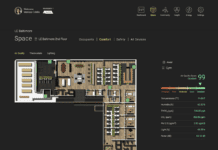Facility professionals looking for strategies to control HVAC and lighting costs—two of the highest energy consuming systems in a building—can consider a new offering that is a collaboration between GE Lighting and Trane.
GE’s LightSweep™ Modular Lighting Control Solution can now be integrated into the Trane Tracer™ centralized building automation system (BAS), which provides users with an integrated approach for implementing advanced control strategies across their lighting and HVAC systems.
The LightSweep product allows “on-off”, dimming, group control, and scheduling capabilities for indoor and outdoor lighting systems. With tight connectivity to Trane Tracer, LightSweep enables facility managers to perform all of these functions and obtain energy usage reports remotely from a Web browser. This platform is also compatible with heating and air conditioning controls as well as other building systems.
Built on a modular platform, LightSweep allows for seamless upgrades to meet changing lighting control needs, whether it’s for a small office or global retailer. Snap-in control modules can be factory pre-installed in panels or field installed—either in existing panels as expansions or in remote locations for localized control.
LightSweep’s CLCBnet controller provides integration with a building management system using the BACnet protocol. This controller also provides remote programmability and control, either through dedicated software or via a Web browser.
Trane’s Tracer BAS is based on open standards that integrates building systems to maximize operational and energy efficiency. The system has full mobile capability to allow access and operation from a laptop, tablet, or smart phone.
With this connectivity, facility managers are able to monitor lighting and HVAC schedules to ensure optimum energy efficiency. For example, if an office uses sensors that are aware when occupants use a certain space, managers can in turn use the software to monitor and analyze how often the space is used. These capabilities can help facility professionals better determine if the office space needs to be expanded or repurposed for more efficient use.


















![[VIDEO] Collect Asset Data at the Speed of Walking a Building](https://facilityexecutive.com/wp-content/uploads/2024/02/maxresdefault-324x160.jpg)